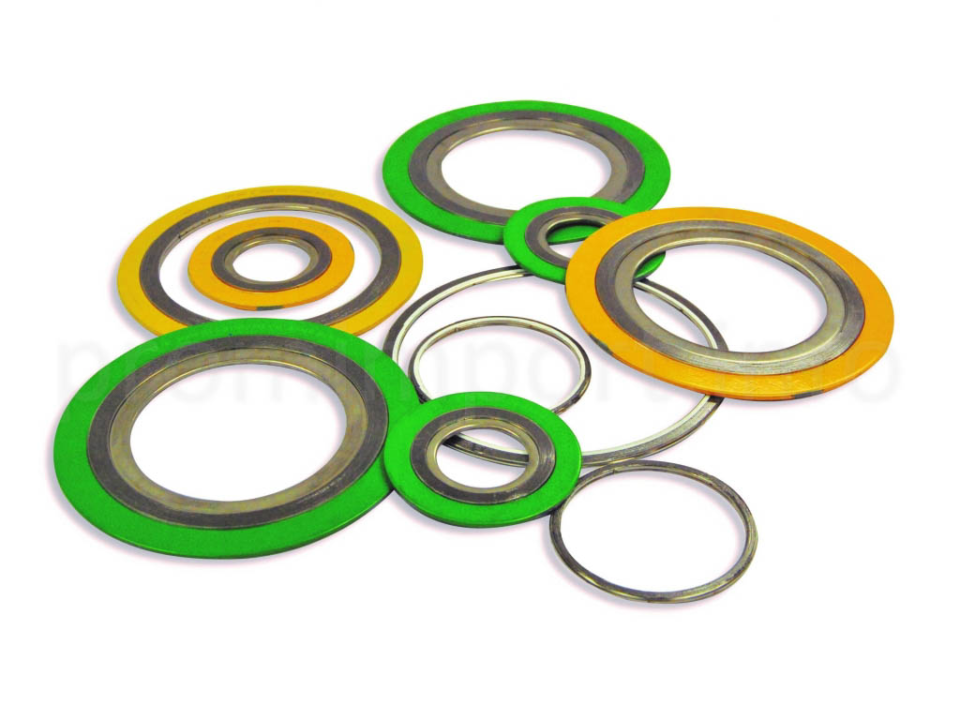In the world of industrial sealing solutions, few products are as reliable and versatile as Flexitallic Spiral Wound Gaskets. These unassuming yet crucial components play a pivotal role in maintaining the integrity of pipelines, flanges, and joints across various industries. In this blog, we will delve into the world of Flexitallic spiral wound gaskets, exploring their key attributes and, more importantly, shedding light on troubleshooting common gasket issues.
Table of Contents
Understanding Flexitallic Spiral Wound Gaskets
Flexitallic Spiral Wound Gaskets are precision-engineered sealing devices designed to withstand extreme temperatures, high pressures, and corrosive environments. They are constructed by winding a metal strip and a soft filler material in a spiral configuration. This unique design imparts remarkable resilience and adaptability to these gaskets, making them suitable for a wide array of applications.
The Anatomy of a Spiral Wound Gasket:
To comprehend the troubleshooting process better, it’s essential to understand the components of a Flexitallic Spiral Wound Gasket:
Metal Winding: The metal winding provides structural stability and resilience to the gasket. Common materials include stainless steel and carbon steel.
Filler Material: Placed between the metal winding, the filler material acts as a seal and is typically composed of graphite, PTFE, or other soft materials.
Inner and Outer Rings: These rings, often made from carbon steel or stainless steel, help to center the gasket within the flange and provide additional structural support.
Centering Ring: In some designs, a centering ring is used to prevent inward buckling of the gasket under high pressures.
Now, let’s delve into some common issues that can arise with these gaskets and how to troubleshoot them effectively.
Troubleshooting Common Gasket Issues:
1. Leakage:
Problem: Leakage is one of the most prevalent issues with spiral wound gaskets. It can occur due to insufficient compression, misalignment, or improper installation.
Solution: To address leakage, ensure proper alignment of the flanges and adequate bolt tightening. Follow the manufacturer’s torque recommendations closely, and consider using a torque wrench to achieve uniform compression.
2. Blowouts:
Problem: Blowouts happen when the internal pressure exceeds the gasket’s capability. This can result from selecting the wrong gasket material or incorrect installation.
Solution: Choose the appropriate Flexitallic Spiral Wound Gaskets with the right material compatibility for your application. Ensure that the gasket is correctly installed and centered within the flange.
3. Fugitive Emissions:
Problem: Fugitive emissions, or the escape of gases or liquids from the system, can occur when the gasket material is not chemically compatible with the fluid it is sealing.
Solution: Select a gasket material that is compatible with the fluid and temperature conditions in your system. Flexitallic spiral wound gaskets offer a wide range of material options to suit various applications.
4. Flange Face Damage:
Problem: Flange face damage can lead to uneven compression and leakage. This damage often occurs due to corrosion, erosion, or improper handling during installation.
Solution: Regularly inspect flange faces for damage and corrosion, and repair or replace them as needed. Ensure that the gasket is handled and installed with care to prevent damage.
5. Cold Flow of Filler Material:
Problem: Over time, the filler material in a spiral wound gasket may exhibit cold flow, resulting in reduced sealing performance.
Solution: Consider using a gasket with a stopper layer or an inner ring to limit the cold flow of the filler material. Regularly inspect and replace gaskets showing signs of cold flow.
6. Overcompression:
Problem: Excessive bolt torque can lead to overcompression of the gasket, which may cause material deformation and reduced sealing performance.
Solution: Follow the manufacturer’s recommended torque values to prevent overcompression. Using a torque wrench can help achieve the correct compression without damaging the gasket.
Conclusion:
Flexitallic Spiral Wound Gaskets are integral components in industrial systems, ensuring leak-free and reliable operations. Understanding their construction and troubleshooting common gasket issues is essential for maintaining system integrity and preventing costly downtime.

